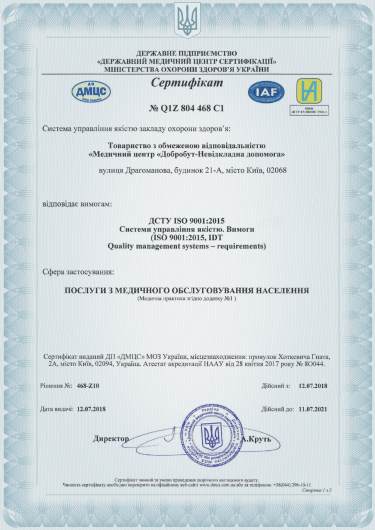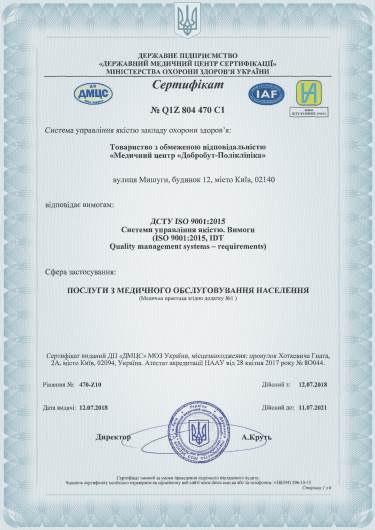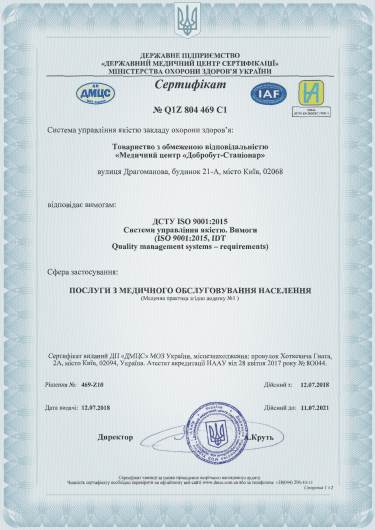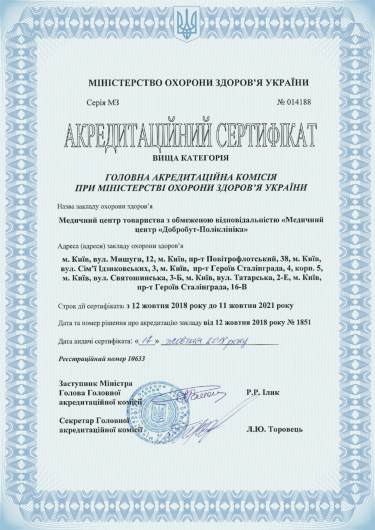Stenting and revision of the ureteral stent
Urine formed in the kidneys enters the bladder through the ureters. Normally, a person has two kidneys and two ureters. Impaired urine outflow, due to certain pathologies, injuries or surgical interventions is manifested by severe pain in the lumbar region. Various techniques are used to eliminate the problem, including ureteral stenting.
Ureteral stenting is a minimally invasive surgical procedure, the essence of which is to install a special stent in the ureter, which restores normal urine flow.
What is a ureteral stent?
This is a thin tube, 8 to 60 cm long. The tube has spiral mounts to prevent displacement of the stent and to fix it in the cavity of the kidney or bladder. The stent must meet several requirements: be smooth, flexible and resistant to urine. Typically, stents are made of silicone or polyurethane. To reduce urinary reactions, some stents are treated with a hydrogel to increase service life.
The size, shape and material of the ureteral stent are selected individually and depend on the anatomy of the patient, as well as the reasons for stent placement. Typically, stents have a diameter of 1.5-6 mm. To prevent displacement of the stent, one or both ends have a spiral shape.
When is ureteral stenting required?
Urological:
- urolithiasis (kidney stones, ureter; after removal or crushing of stones sometimes shown stent installation);
- malignant tumours (ureter, bladder, prostate);
- benign prostate adenoma (BPH);
- adhesions of the pelvic organs;
- narrowing of the ureter (stricture);
- deviation of the ureter (abnormal tortuosity of the ureter, which leads to impaired urine outflow).
Not urological:
- spread of tumours of other localizations to the ureters;
- haematological and vascular causes (lymphomas, lymphadenopathy, compression of the ureter by iliac vessels);
- iatrogenic (through the fault of doctors, for example, during surgery in the pelvis there was damage to the ureter).
As a rule, stenting of the ureter is performed when this procedure is indispensable. Also, this operation is considered quite simple. For these reasons, stenting has virtually no contraindications. However, in case of severe ureteral injury, pronounced inflammatory process, late stages of pelvic cancer, burdened with severe somatic pathology, as well as the patient's pregnancy, the decision on the possibility of the procedure is made by a urologist individually.
How is the preparation for the procedure?
A comprehensive full-fledged preoperative examination is performed:
- history taking, examination of the genitourinary system - vaginal examination in women and rectal in men;
- excretory urography;
- Ultrasound of the kidneys, bladder, ureters;
- CT of the retroperitoneal space and abdominal organs;
- general analysis of blood and urine;
- fluorography;
- ECG.
Hunger is shown on the day of the operation. To remove gases and clean the intestinal wall, make a cleansing enema. To prevent post-procedural infection, an antibiotic is prescribed. Before manipulation, the bladder should be emptied for free access to the cystoscope.
How is ureteral stenting performed?
There are 2 ways to install a ureteral stent - retrograde transurethral and antegrade transfistular.
Retrograde (through the urethra) is the standard insertion of a stent through the urethra and bladder using an endoscope tube with a video camera and a string conductor. The operation is performed under general anaesthesia or spinal anaesthesia (the patient is conscious but does not feel anything). As a rule, the stent is made in the form of a thin metal mesh, because it simplifies its movement and proper installation. It is transported to the place of installation in a folded form, and after reaching the place of narrowing it is straightened. The straightened walls of the stent support the ureter, preventing it from narrowing. The operation is monitored by X-ray, both during and after the procedure. For a better examination, the bladder is filled with a sterile solution. After installation, the fluid is pumped out and the endoscope is removed.
Antegrade method - a stent is inserted through a puncture of the skin into the renal pelvis (the place of transition of the kidney into the ureter) and then installed in the direction of the bladder into the ureter. Manipulations are performed under X-ray control. Sometimes the procedure is performed in 2 stages - first, a catheter is placed in the renal pelvis to drain urine, and a week later - a stent.
In clinical practice, the retrograde method is used much more often.
How is the recovery period?
After the operation, the patient is transferred to the hospital ward, where he will spend 1-2 days under the supervision of medical staff. In the first days, the patient may experience pain when urinating, frequent urge to go to the toilet, blood in the urine, pain in the lower abdomen and lower back. To eliminate the unpleasant consequences, the doctor will prescribe a course of painkillers and anti-inflammatory drugs, as well as antibiotics. With adequate treatment, the negative consequences go away in 3-4 days.
For how long is a ureteral stent installed?
If there are no adverse reactions and complications, the stent is removed at least 2 weeks and at most 6 months after installation - when the urinary structures take a physiological position and the stent is no longer needed. If lifelong use is required, it is changed to a new one every 3-4 months to prevent urological infection, clogging with urine salts, damage to the mucous membrane and the formation of bedsores.
How is a ureteral stent removed?
Removal of a ureteral stent takes place on an outpatient basis, under anaesthesia, and takes much less time than the procedure of its installation. There are now several ways to remove a stent:
- The first traditional - Cystoscopically (through the urethra).
- The second - with the help of threads that are tied to the stent and come out through the outer opening of the urethra (urethra).
- The third method - can be used only in women and is to use a special sterile loop under X-ray or ultrasound control.
- The fourth way is to remove a special stent with a magnet.
Bibliography
- Фигурин К.М. Злокачественные новообразования почечных лоханок и мочеточников. Онкоурология. 2006;2(2):5-12.
- Аляев Ю.Г., Винаров А.З., Крапивин А.А. Диагностика опухоли лоханки и мочеточника. В кн.: Тезисы VI Всероссийской научно-практической конференции Актуальные вопросы лечения онкоурологических заболеваний 4-5 октября 2005 г. Онкоурология (приложение) 2005: прил.: 5-6.
- Клинические рекомендации по диагностике и лечению больных с опухолями верхних мочевыводящих путей. Ассоциации онкологов России. Москва 2014.
- Русаков И.Г., Быстрое А.А. Хирургическое лечение, химио- и иммунотерапия больных поверхностным раком мочевого пузыря. Практическая онкология № 4, 2003; С. 214-24.
- Мартов А.Г., Ергаков Д.В., Байков Н.А., Поминальная В.М., Соломатов И.А. Трансуретральное удаление опухолей мочевого пузыря единым блоком // Онкоурология. 2015. Т. 1, № 1. С. 41–49.
- Переверзев А.С., Петров C.Б. Опухоли мочевого пузыря. – Х.: Факт, 2002. – 303с.
Our advantages
Choose the nearest clinic
ISO certificates



Accreditation certificates



Licenses of medical practice

















%402x.png)
%402x.png)
